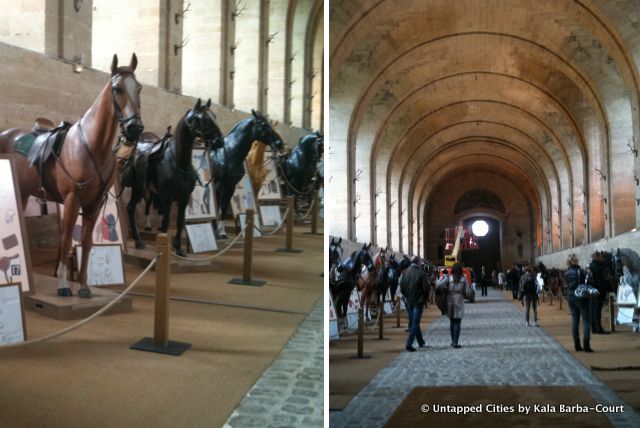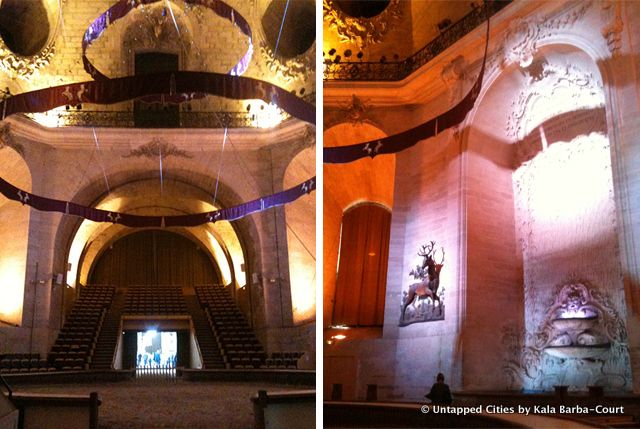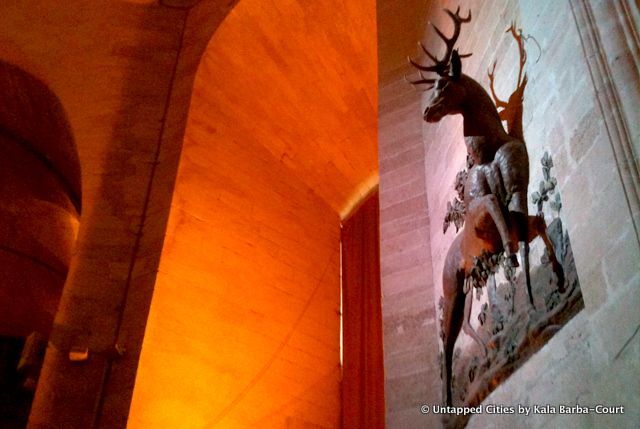New Film Shows How Art Brings Life to Green-Wood Cemetery
Discover how the living and the dead make Green-Wood Cemetery a vibrant part of NYCs cultural scene!


An hour away from Paris is Chantilly, known for its picturesque castle dating back to the Gallo-Roman period, its forest and park. Today the Chantilly castle houses the Musée Condé, where collections of the Duke of Aumale, its last private owner, are open to the public. Raphael, Botticelli, and Ingres are only some of the impressive art treasures on display in the museum. But even these gems are seemingly upstaged by the magnificent stables or Grandes Ecuries, a testament to the French upper classes’ love for horses. Chantilly is, after all, the capital of thoroughbred racing in France.
Prince Henri-Louis de Bourbon, firm in his belief that he would one day be reincarnated as a horse, had Jean Aubert design his equestrian palace in 1719, which explains the grandeur of the stables. The term “fit for a king” has never rang so true and literal at the Grandes Ecuries. In its heyday it housed 240 horses and 500 hounds used for the year-round hunts. In 1982, rider and instructor Yves Bienaimé created the Musée Vivant du Cheval (Living Museum of the Horse), which has since established itself as a must-see for all horse lovers.

At the entrance of the Grand Stables we get acquainted with the true stars of the museum: the horses. Thirty horses can be observed in their own luxurious wooden stall accommodations. Andalucian and Portugese horses bring a historic and sentimental tone to the museum; these were the same race of horses installed in the stables in the 18th century, much appreciated by the princes of Condé. Spanish, Thoroughbred and Friesian are the some of the other breeds that make up the Living Museum of the Horse, as well as several poneys and the lovable donkey Séraphin.

The museum has 31 rooms dedicated to paintings, sculptures, and ceramics focusing on everything equine-related. To visit them, however, you’ll have to hold your horses (excuse the pun): most of the rooms, save for three, are currently being restored before opening to the public by the end of 2012. The architecture of the building is enough to impress, especially the Grand Stables Dome where the equestrian shows are held for the public.

By encouraging the public to interact and observe the animals at close range, the museum is a great way to be educated on all things equine. Horse lover or not, you can’t help but be impressed by these powerful and beautiful beasts, who played such a significant role in France’s history that they are, to this day, revered on the grounds of one of the most beautiful castles in France.
Tip: There are educational dressage demonstrations twice a day at 11am and 2:30pm, where the horses perform “airs” for spectators. Also, Don’t miss the fantastic hour-long equestrian show on the first Sunday of each month from February to November, held in the Grand Stables Dome. In December and January they hold a Christmas equestrian show. Check the Museum’s schedule first, and save time by booking online while you’re at it. Enjoy a leisurely stroll around the grounds first: visitors are requested to be there at least 30 minutes before shows.
How to get there: Chantilly is 40km north of Paris and can be reached by car, train, and the RER. A comprehensive guide on how to get there is outlined here.
Subscribe to our newsletter